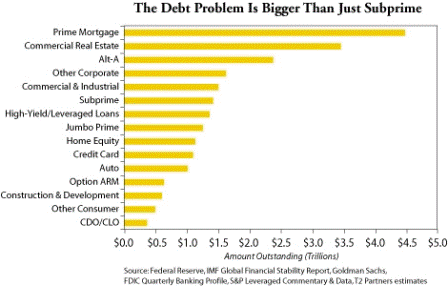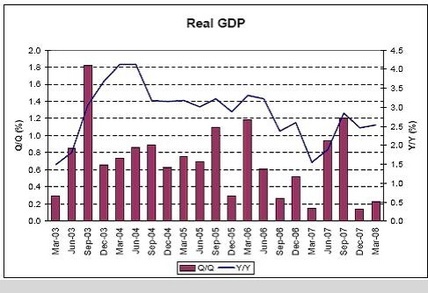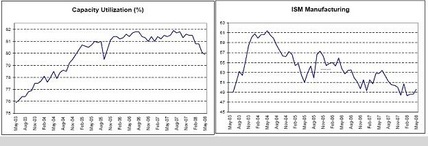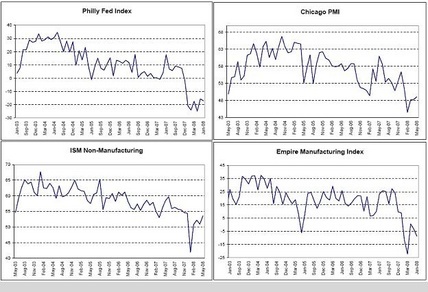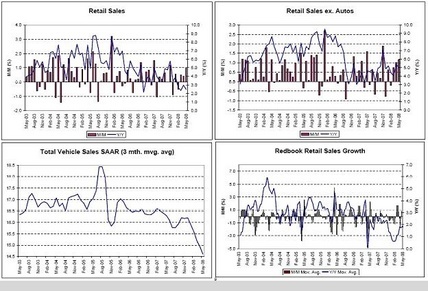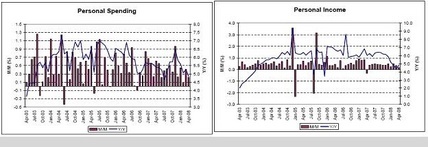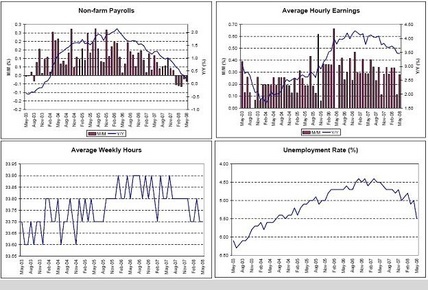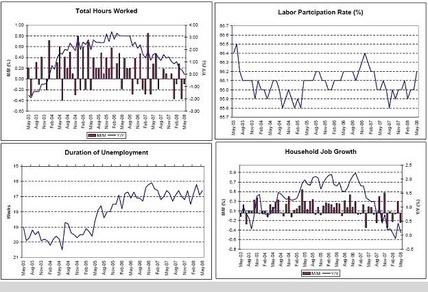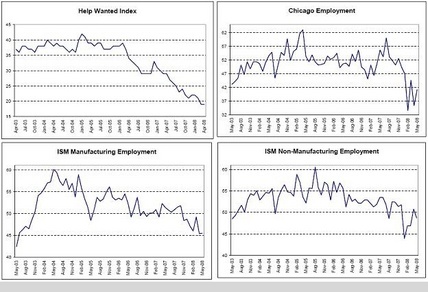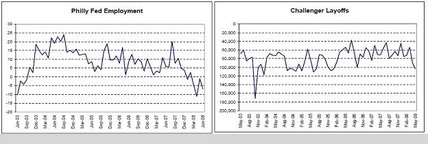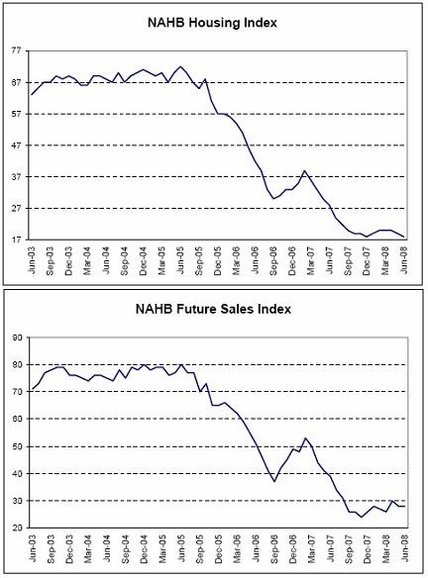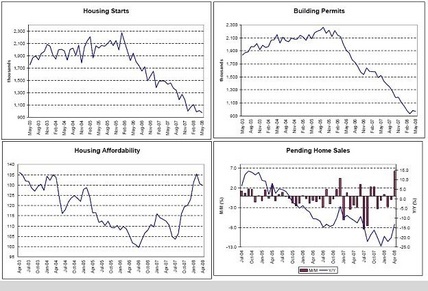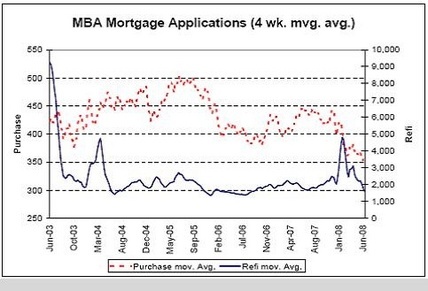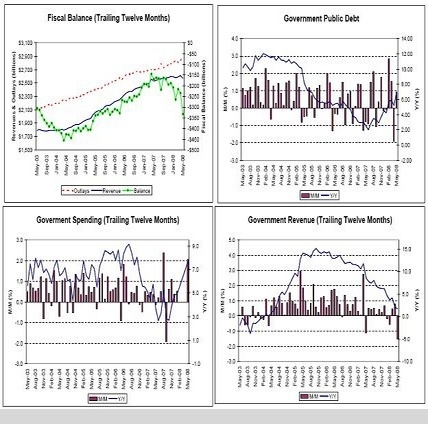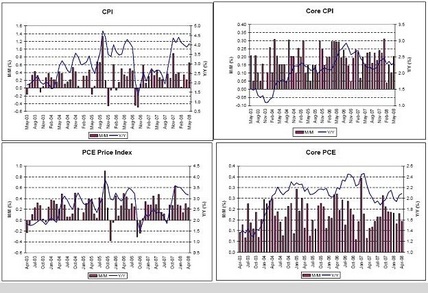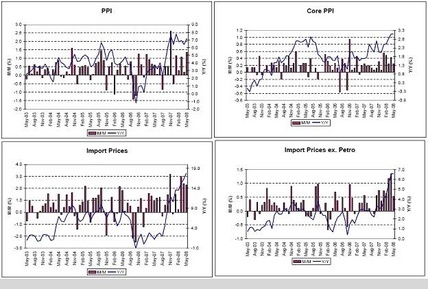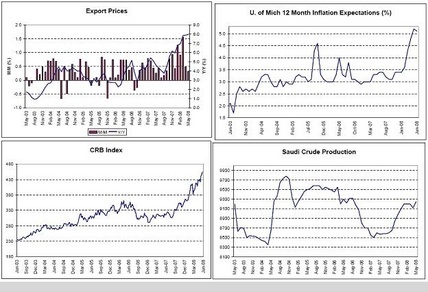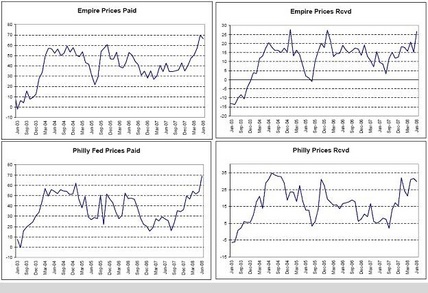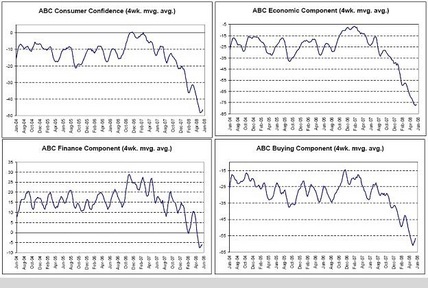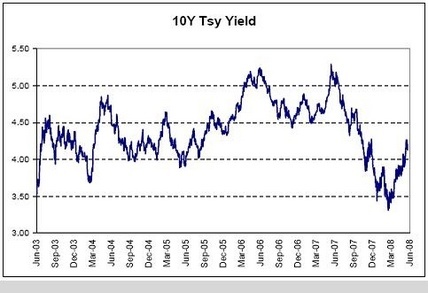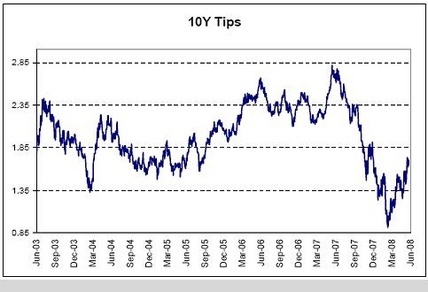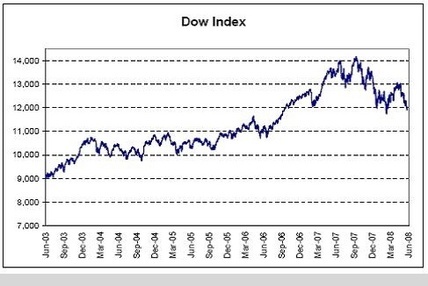[Skip to the end]
The big concern is managing inflation expectation not realizing that inflation is not a function of inflation expectations:
By Ben Bernanke
July 21 (WSJ) — The depth and breadth of the global recession has required a highly accommodative monetary policy. Since the onset of the financial crisis nearly two years ago, the Federal Reserve has reduced the interest-rate target for overnight lending between banks (the federal-funds rate) nearly to zero. We have also greatly expanded the size of the Fed’s balance sheet through purchases of longer-term securities and through targeted lending programs aimed at restarting the flow of credit.
These actions have softened the economic impact of the financial crisis.
There is no evidence of that.
They have also improved the functioning of key credit markets, including the markets for interbank lending, commercial paper, consumer and small-business credit, and residential mortgages.
Yes. Though the measures taken missed the direct approach and instead involved a myriad of complex and expensive programs that burned through precious political capital and delayed the repair of those markets.
My colleagues and I believe that accommodative policies will likely be warranted for an extended period. At some point, however, as economic recovery takes hold, we will need to tighten monetary policy to prevent the emergence of an inflation problem down the road.
They continue to believe that lower interest rates fan inflation and higher interest rates fight inflation.
I suggest theory and econometric evidence show that with current institutional arrangements the opposite is true.
The Federal Open Market Committee, which is responsible for setting U.S. monetary policy, has devoted considerable time to issues relating to an exit strategy. We are confident we have the necessary tools to withdraw policy accommodation, when that becomes appropriate, in a smooth and timely manner.
Nothing could be easier. This is a non issue.
The exit strategy is closely tied to the management of the Federal Reserve balance sheet. When the Fed makes loans or acquires securities, the funds enter the banking system and ultimately appear in the reserve accounts held at the Fed by banks and other depository institutions. These reserve balances now total about $800 billion, much more than normal. And given the current economic conditions, banks have generally held their reserves as balances at the Fed.
What else could they do? Lending doesn’t diminish reserve balances in aggregate. This is accounting, not theory. And clearly the FOMC doesn’t know this.
But as the economy recovers, banks should find more opportunities to lend out their reserves.
Again, that doesn’t diminish total reserves held by the banks at the fed.
That would produce faster growth in broad money (for example, M1 or M2) and easier credit conditions, which could ultimately result in inflationary pressures—
Only if the borrowing to spend increases aggregate demand, which is certainly possible.
unless we adopt countervailing policy measures.
Those would be rate hikes, which add income to the non govt sectors and can add to inflation via the cost channel as well as the fiscal channel.
When the time comes to tighten monetary policy, we must either eliminate these large reserve balances or, if they remain, neutralize any potential undesired effects on the economy.
They have no effect on the economy in any case.
To some extent, reserves held by banks at the Fed will contract automatically, as improving financial conditions lead to reduced use of our short-term lending facilities, and ultimately to their wind down. Indeed, short-term credit extended by the Fed to financial institutions and other market participants has already fallen to less than $600 billion as of mid-July from about $1.5 trillion at the end of 2008. In addition, reserves could be reduced by about $100 billion to $200 billion each year over the next few years as securities held by the Fed mature or are prepaid.
These are just exchanges of financial assets which have no effect on the economy.
However, reserves likely would remain quite high for several years unless additional policies are undertaken.
Even if our balance sheet stays large for a while, we have two broad means of tightening monetary policy at the appropriate time: paying interest on reserve balances and taking various actions that reduce the stock of reserves. We could use either of these approaches alone; however, to ensure effectiveness, we likely would use both in combination.
Yes, increasing interest rates is a simple matter operationally.
Congress granted us authority last fall to pay interest on balances held by banks at the Fed. Currently, we pay banks an interest rate of 0.25%. When the time comes to tighten policy, we can raise the rate paid on reserve balances as we increase our target for the federal funds rate.
Yes.
Banks generally will not lend funds in the money market at an interest rate lower than the rate they can earn risk-free at the Federal Reserve. Moreover, they should compete to borrow any funds that are offered in private markets at rates below the interest rate on reserve balances because, by so doing, they can earn a spread without risk.
Thus the interest rate that the Fed pays should tend to put a floor under short-term market rates, including our policy target, the federal-funds rate. Raising the rate paid on reserve balances also discourages excessive growth in money or credit, because banks will not want to lend out their reserves at rates below what they can earn at the Fed.
Considerable international experience suggests that paying interest on reserves effectively manages short-term market rates. For example, the European Central Bank allows banks to place excess reserves in an interest-paying deposit facility. Even as that central bank’s liquidity-operations substantially increased its balance sheet, the overnight interbank rate remained at or above its deposit rate. In addition, the Bank of Japan and the Bank of Canada have also used their ability to pay interest on reserves to maintain a floor under short-term market rates.
Yes, for many, many years. It’s the obvious way to go.
Despite this logic and experience, the federal-funds rate has dipped somewhat below the rate paid by the Fed, especially in October and November 2008, when the Fed first began to pay interest on reserves. This pattern partly reflected temporary factors, such as banks’ inexperience with the new system.
However, this pattern appears also to have resulted from the fact that some large lenders in the federal-funds market, notably government-sponsored enterprises such as Fannie Mae and Freddie Mac, are ineligible to receive interest on balances held at the Fed, and thus they have an incentive to lend in that market at rates below what the Fed pays banks.
Yes, someone in government who did not understand reserve accounting and monetary operations excluded those accounts at the Fed.
Under more normal financial conditions, the willingness of banks to engage in the simple arbitrage noted above will tend to limit the gap between the federal-funds rate and the rate the Fed pays on reserves. If that gap persists, the problem can be addressed by supplementing payment of interest on reserves with steps to reduce reserves and drain excess liquidity from markets—the second means of tightening monetary policy. Here are four options for doing this.
First, the Federal Reserve could drain bank reserves and reduce the excess liquidity at other institutions by arranging large-scale reverse repurchase agreements with financial market participants, including banks, government-sponsored enterprises and other institutions. Reverse repurchase agreements involve the sale by the Fed of securities from its portfolio with an agreement to buy the securities back at a slightly higher price at a later date.
Yes, offers interest bearing alternatives to reserve balances.
Second, the Treasury could sell bills and deposit the proceeds with the Federal Reserve. When purchasers pay for the securities, the Treasury’s account at the Federal Reserve rises and reserve balances decline.
Yes, offers interest bearing alternatives to reserve balances.
The Treasury has been conducting such operations since last fall under its Supplementary Financing Program. Although the Treasury’s operations are helpful, to protect the independence of monetary policy, we must take care to ensure that we can achieve our policy objectives without reliance on the Treasury.
Why??? It’s all the same government.
Third, using the authority Congress gave us to pay interest on banks’ balances at the Fed, we can offer term deposits to banks—analogous to the certificates of deposit that banks offer their customers. Bank funds held in term deposits at the Fed would not be available for the federal funds market.
Yes, and, more important, this can be used to set the term structure of rates the same way treasury securities do. They are functionally identical.
Fourth, if necessary, the Fed could reduce reserves by selling a portion of its holdings of long-term securities into the open market.
Yes, which also support longer term rates at higher levels.
Each of these policies would help to raise short-term interest rates and limit the growth of broad measures of money and credit, thereby tightening monetary policy.
And only limits the growth of broad money (which presumably matters even though the fed stopped publishing M3 because they found no evidence it did matter) if the higher rates limit borrowing.
Overall, the Federal Reserve has many effective tools to tighten monetary policy when the economic outlook requires us to do so. As my colleagues and I have stated, however, economic conditions are not likely to warrant tighter monetary policy for an extended period. We will calibrate the timing and pace of any future tightening, together with the mix of tools to best foster our dual objectives of maximum employment and price stability.
—Mr. Bernanke is chairman of the Federal Reserve.
[top]
